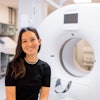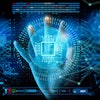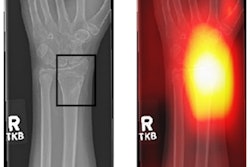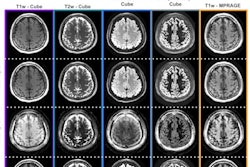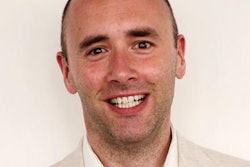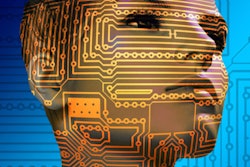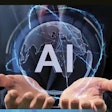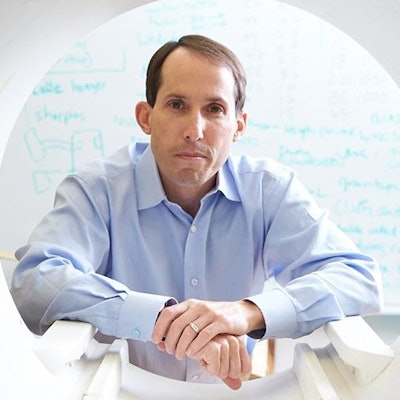
Global artificial intelligence (AI) luminary Dr. Daniel Sodickson, PhD, has sought to allay fears that a "Wild West" of disruptive innovations and increased automation in the coming years could decimate the jobs of radiographers.
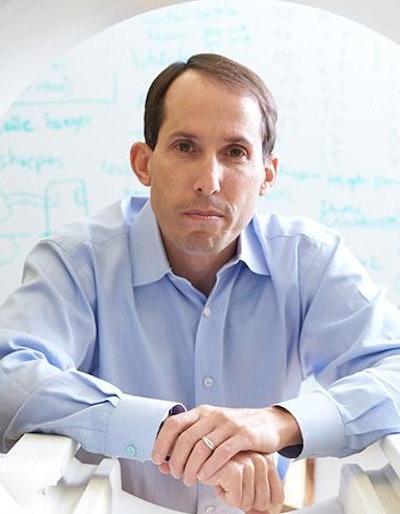 Dr. Daniel Sodickson, PhD, past president of ISMRM. Photo courtesy of John Madere and NYU Langone Health.
Dr. Daniel Sodickson, PhD, past president of ISMRM. Photo courtesy of John Madere and NYU Langone Health.In a visionary keynote lecture at last week's annual meeting of the International Society for Magnetic Resonance in Medicine (ISMRM) in London, he said he totally understood people's concerns about the future of MRI, but he urged colleagues to look more to how they could proactively influence and shape the new technologies being developed.
"For some time, it's been an era like the Wild West, with people going out and lawlessly creating an algorithm here and shooting out a diagnosis there," said Sodickson, who is a past president of ISMRM and a professor of radiology neuroscience and physiology and Biomedical Engineering at New York University. "I think we're the ones as imagers who can say, 'wait a second, show me the documentation, show me the validation, does this really work for my patients?' "
Overall, Sodickson gave a "bullish" vision for the transformative impact of developments such as artificial intelligence (AI). His viewpoint was warmly received, but not without wary notes of skepticism and doubt. Some in the audience countered his optimism, warning how MRI tasks being taken over by machines or outsourced remotely to nonradiographers could erode imagers' livelihoods and professional skills.
"I see an alternative future in which there can actually be a remarkable growth in the role rather than just a decline," he said.
Sodickson predicted that radiographers would be in great demand for advanced skills, as healthcare providers and funders would find they were "exactly who we need to figure out how we can bring imaging to people in a way that is helpful and not terrifying."
"Every time of remarkable flux is a time of great threat but also a time of great opportunity," he said, adding that he could not guarantee negative scenarios would not play out.
Parallels with industrial revolution
Sodickson noted MRI was at a similar juncture historically to the era of the industrial revolution that "brought us modern life as we know it" but also killed off countless jobs through mechanisation. However, he said many people ultimately ended up gaining jobs created by technological change.
"You're right that if we automate more and more, if we do the same things we've already done, eventually we'll winnow down to the minimal number of people who can do it," he said. "But I actually think the exit from that scenario is new populations, new types of imaging that drive new volume."
There was a brighter and more feasible alternative future ahead than the wipe-out some foresaw from self-driving scanners. He cited the general move in healthcare delivery away from predominantly hospital-based and episodic care to "continuous healthcare" in other settings, such as primary care, pharmacies, workplaces, and patients' own homes.
This could see MRI "moving from last bastion of diagnosis up to the front line," while there would still be a need for advanced diagnosis "to make sure we're not missing anything." "So, in fact, I see the potential volume of scans and scanning for radiologists and radiographers increasing if we do this, rather than decreasing."
Trends in MRI
Sodickson described two important current trends.
"One is towards lower field, automation, swift workflow, fast -- almost industrial -- imaging. But the other is all about new contrasts and advanced systems and so on," he said. "You could see a future in which some of the more routine imaging is done in a more automated way.
"But the advanced imaging with all of these new contrasts and all of this sort of more definitive answer, is now the mainstream and if there's enough volume of that, then people are actually upskilling, rather than downskilling."
Sodickson continued, "I'm not an economist; I can't predict how those trends are going to balance but I think at the moment the advanced imaging is almost squeezed out by all the pressure on efficiency, right?
"Well, if the money is coming in in different ways, if the patients are being referred already with higher probability of disease and all you need to know is what exactly is the key underlying cellular anomaly here, then you could imagine that MRI would be more advanced rather than less," he said.
Sodickson said high-end contrast would continue to add value and would provide even molecular, microscopic, and cellular information about diseases. "I think AI and new imaging technologies can, if we play our cards right, fill in the gaps in our current model of episodic imaging, connecting imaging sessions over time with memory, providing early warning for patients."
Radiographers have historically been the "key interface between the imaging technologies and the people being imaged" and they would be vital to future clinical practice and research. Imaging professionals remain the experts in acquisition and reconstruction and interpretation and careful studies, he emphasized.
Sodickson was asked who would be next from the MRI field to win a Nobel prize. "All I can say is, it had better be a woman!" he responded.
